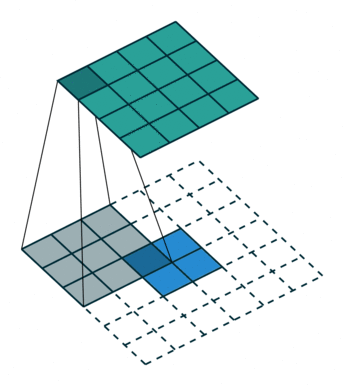DataLoaderにはDataset型を食わせればいい
例:Kaixhin/FCN-semantic-segmentation/data.py
import os
import random
from PIL import Image
import torch
from torch.utils.data import Dataset
num_classes = 20
full_to_train = {-1: 19, 0: 19, 1: 19, 2: 19, 3: 19, 4: 19, 5: 19, 6: 19, 7: 0, 8: 1, 9: 19, 10: 19, 11: 2, 12: 3, 13: 4, 14: 19, 15: 19, 16: 19, 17: 5, 18: 19, 19: 6, 20: 7, 21: 8, 22: 9, 23: 10, 24: 11, 25: 12, 26: 13, 27: 14, 28: 15, 29: 19, 30: 19, 31: 16, 32: 17, 33: 18}
train_to_full = {0: 7, 1: 8, 2: 11, 3: 12, 4: 13, 5: 17, 6: 19, 7: 20, 8: 21, 9: 22, 10: 23, 11: 24, 12: 25, 13: 26, 14: 27, 15: 28, 16: 31, 17: 32, 18: 33, 19: 0}
full_to_colour = {0: (0, 0, 0), 7: (128, 64, 128), 8: (244, 35, 232), 11: (70, 70, 70), 12: (102, 102, 156), 13: (190, 153, 153), 17: (153, 153, 153), 19: (250, 170, 30), 20: (220, 220, 0), 21: (107, 142, 35), 22: (152, 251, 152), 23: (70, 130, 180), 24: (220, 20, 60), 25: (255, 0, 0), 26: (0, 0, 142), 27: (0, 0, 70), 28: (0, 60,100), 31: (0, 80, 100), 32: (0, 0, 230), 33: (119, 11, 32)}
class CityscapesDataset(Dataset):
def __init__(self, split='train', crop=None, flip=False):
super().__init__()
self.crop = crop
self.flip = flip
self.inputs = []
self.targets = []
for root, _, filenames in os.walk(os.path.join('leftImg8bit_trainvaltest', 'leftImg8bit', split)):
for filename in filenames:
if os.path.splitext(filename)[1] == '.png':
filename_base = '_'.join(filename.split('_')[:-1])
target_root = os.path.join('gtFine_trainvaltest', 'gtFine', split, os.path.basename(root))
self.inputs.append(os.path.join(root, filename_base + '_leftImg8bit.png'))
self.targets.append(os.path.join(target_root, filename_base + '_gtFine_labelIds.png'))
def __len__(self):
return len(self.inputs)
def __getitem__(self, i):
input, target = Image.open(self.inputs[i]), Image.open(self.targets[i])
if self.crop is not None:
w, h = input.size
x1, y1 = random.randint(0, w - self.crop), random.randint(0, h - self.crop)
input, target = input.crop((x1, y1, x1 + self.crop, y1 + self.crop)), target.crop((x1, y1, x1 + self.crop, y1 + self.crop))
if self.flip:
if random.random() < 0.5:
input, target = input.transpose(Image.FLIP_LEFT_RIGHT), target.transpose(Image.FLIP_LEFT_RIGHT)
w, h = input.size
input = torch.ByteTensor(torch.ByteStorage.from_buffer(input.tobytes())).view(h, w, 3).permute(2, 0, 1).float().div(255)
target = torch.ByteTensor(torch.ByteStorage.from_buffer(target.tobytes())).view(h, w).long()
input[0].add_(-0.485).div_(0.229)
input[1].add_(-0.456).div_(0.224)
input[2].add_(-0.406).div_(0.225)
remapped_target = target.clone()
for k, v in full_to_train.items():
remapped_target[target == k] = v
target = torch.zeros(num_classes, h, w)
for c in range(num_classes):
target[c][remapped_target == c] = 1
return input, target, remapped_target
 figure 1. from vdumoulin/conv_arithmetic
figure 1. from vdumoulin/conv_arithmetic 


















